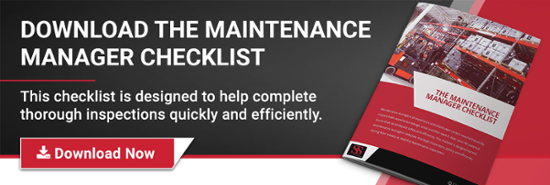An efficient and safe warehouse should always have a forklift battery maintenance program in place. Regularly inspecting forklift batteries contributes to their longevity and helps you get the most out of your investment in motive power equipment, as well as ensures the safety of your warehouse crew.
Including a forklift battery maintenance plan into the daily operations of your warehouse will ensure routine safety checks are being conducted efficiently, and will protect both your batteries and your employees. But, what does a successful battery maintenance program include?
Core Components of Regular Battery Maintenance
There are three essential components of regular maintenance for proper battery care:
1. Battery Washing
The battery washing process involves the battery being washed and rinsed with a neutralizing agent. Battery washing extend the operating life of your batteries and motive power equipment, plus keeps your warehouse staff safer. Keep in mind that battery washing should be conducted by trained personnel with wastewater disposal tightly controlled for safety.
2. Battery and Charger Planned Maintenance
An essential process of a regular maintenance plan is the battery inspection process. This should be done visually in order to identify when it is necessary to secure missing intercell connector covers, measure and inspect voltages and acid, and clean batteries. A document should be created to keep clear, verifiable records to track when planned maintenance was last conducted to ensure batteries are chargers are always in safe, productive working conditions. A records system allows you to assess your batteries where they currently stand. Having this baseline enables you to make plans for improvement, and gives you a benchmark to go back to and compare against later so you can always strive towards making improvements with your forklift battery maintenance plan.
3. Battery Watering
Arguably, the proper watering of batteries is one of the most important steps of a maintenance plan. However, it is vital to make sure that you are not overwatering your forklift batteries. When batteries are overwatered, the electrolytic fluid can spill out and cause serious burns to employees. Tell tale signs of these dangerous “boil-overs” is when acid runs down the sides of the batteries and a white cake-like substance forms over the top and sides of the batteries. These substances can be conductive when exposed to flame or sparks, so it is essential that battery watering is conducted properly by trained professionals in a contained area.
Don’t Forget to Make Repairs When Necessary!
Even with a successful forklift battery maintenance program, forklift batteries will sometimes need to be repaired or replaced. However, the good news is that implementing a maintenance program allows you to catch these minor repairs and issues before they became a larger incident and cause damage.
For instance, creating a battery inspection form that outlines everything from the battery model number, age, corrosion levels, and more will help you keep track of the functionality of your battery and identify when maintenance needs to be conducted. When you are doing planned battery maintenance on a regular schedule, you will be able to identify any repairs that may be needed so they can be addressed as soon as possible.
Including these three main components in your planned routine maintenance will help improve your overall forklift safety and workplace efficiency. By being proactive and making any minor repairs or replacements before the problem results in total battery failure or a safety incident, you can save yourself from having to pay for a much more expensive repair in the future or dealing with the costly aftermath of a workplace injury.






